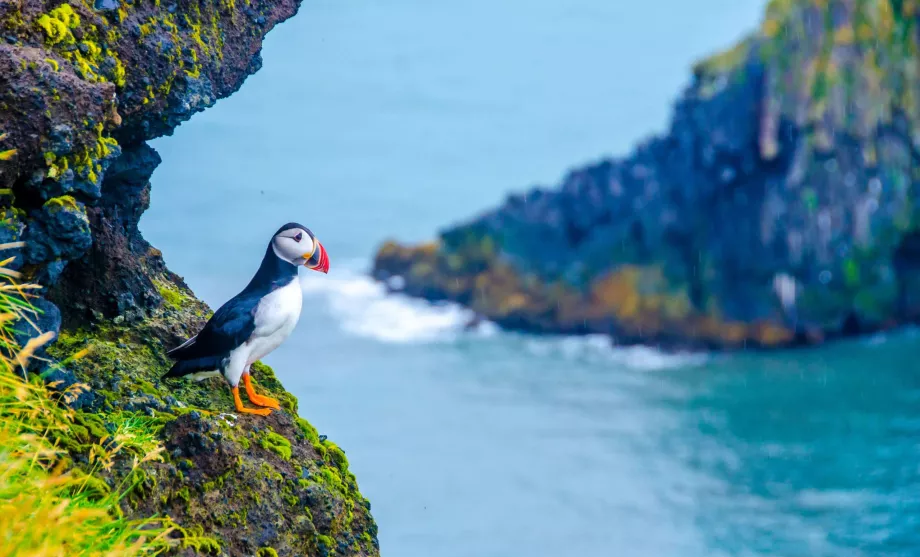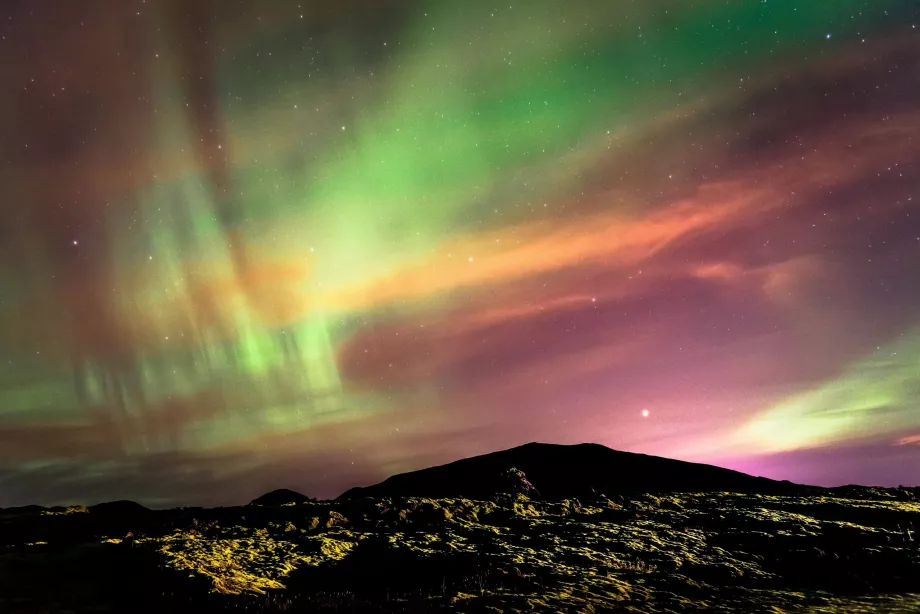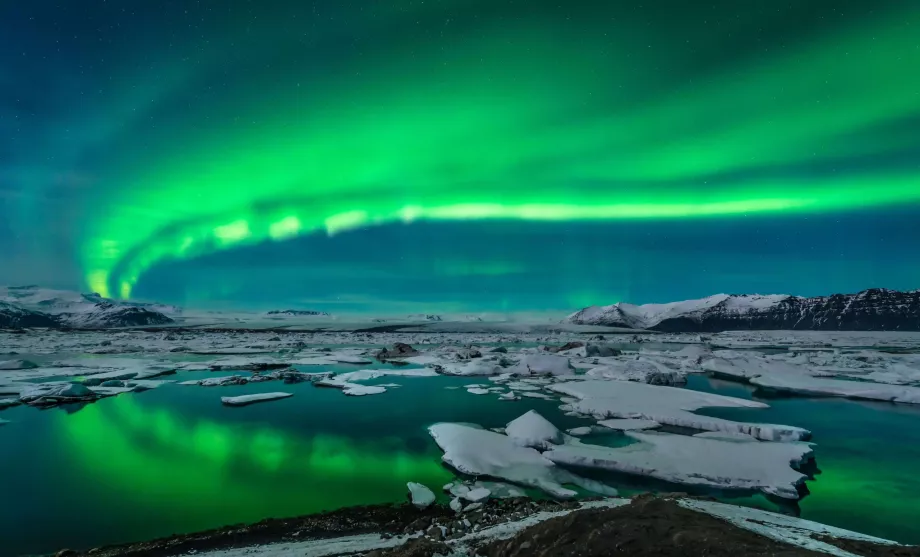Northern Lights in Iceland

Seeing the celestial play of colours known as the aurora borealis is a lifelong dream for many travellers.
One of the best places to see the Northern Lights is Iceland. It lies just far enough north, but at the same time, not beyond the Arctic Circle. In fact, if you are too far inside the Arctic Circle, the aurora borealis will fade again.
In short, Iceland is in an ideal location and attracts many tourists from all over Europe at this time of year, despite the harsh winter weather.
In this article we will not describe how and why the aurora arises, but when and under what conditions to see it in Iceland.
When to go - the best months
The success of aurora viewing depends on many factors, most of which are beyond our control. The only one we can influence is choosing the right time to travel to Iceland to see the Aurora Borealis.
An important prerequisite for observing is, of course, darkness. The Aurora Borealis is a year-round and all-day phenomenon, but the human eye can only see it during the night. Since there is no dark night in Iceland during the summer, you have to go in winter.
The first month when there is little chance of sighting is late August, while the last month is late April. However, there is still more light than darkness in these months, so the chances will still be quite slim.
The best time is late October/early November and February/March.
While darkness is at its greatest in late November and December, these months are also often cloudy for long days, plus the darkness and harsh conditions (frost, wind, snow) will make your schedule for the rest of the day pretty tight.
By the end of February or October, on the other hand, it's dark enough in the evenings and at night, and you'll also have a decent chance of clear skies, plus you'll enjoy plenty of light and decent weather during the day to explore Iceland.
| January | High season |
|---|---|
| February | High season |
| March | High season (until the first half of the month) |
| April | Medium Chance |
| May | Low to no chance |
| June | No chance |
| July | No chance |
| August | No to low chance at the end of the month |
| September | Low to medium chance |
| October | High chance at the end of the month |
| November | High season |
| December | High season |
Colours of the Aurora Borealis
The Aurora Borealis is an amazing and unique phenomenon every time. Sometimes a strong green colour spills across the sky standing still for long minutes, other times shades of deep red, purple or just a subtle greenish colour dance wildly in the sky.
The Northern Lights are simply differently coloured, differently saturated and differently moving each time. The fact is, however, that Iceland is the place in Europe with the richest auroras, next to Norway.
Factors affecting the aurora borealis
In addition to darkness, other important factors affect aurora observations:
- Solar activity - sufficient solar activity is necessary for a strong enough aurora. This is described by the so-called Kp-index, which indicates the disturbance of the Earth's magnetic field by the solar wind, which causes the aurora. The Kp-index is given on a scale from 0 (no activity) to 9 (intense solar storm). While activity at a level of 3 is sufficient to see auroras in Iceland, for example, to see them in continental Europe they need to be at a level of 7 to 8.
- Current weather - the basic assumption is clear skies and no clouds in the lower and middle layers (high clouds do not matter)
- Light pollution - Iceland, with its only major city, is ideally placed to do this. Moreover, if there is strong solar activity (Kp-index higher than 5) and it is clear, you can see the glow from Reykjavik.
Aurora forecast sites
A site directly dedicated to predicting the aurora borealis will be a great help in your aurora hunting. Probably the most straightforward site for observing the aurora in Iceland is the Icelandic Meteorological Society's site en.vedur.is.
This is because they clearly show the forecast of low and mid-level clouds, which is essential for observations. On the above website, the green indicates cloudy skies, while the white indicates clear skies.
In the upper right corner you can see the Kp-index forecast averaged over the whole day (the Kp-index can vary significantly even within the same day). If it is higher than 3, the chances of a sighting are decent, if higher than 5, you are virtually certain to see the aurora. Of course, if it is clear and dark.
Where exactly to go in Iceland?
Many travelers ask where is the exact specific and the "one true" place to see the aurora borealis. It's simple: there is no specific place. You need to be flexible enough to be prepared for a car journey of several hundred kilometres in clear weather.
In short, if the solar activity is high enough (3 or more), the main thing is clear skies, which can only be over a small part of the island. Very generally speaking, there is a slightly better chance of clearer weather in the western and northwestern parts of Iceland, where there is also absolutely minimal light pollution. However, as mentioned, you can see the aurora from Reykjavik under clear skies.
Any questions left?
If you have any questions or comments about the article...



